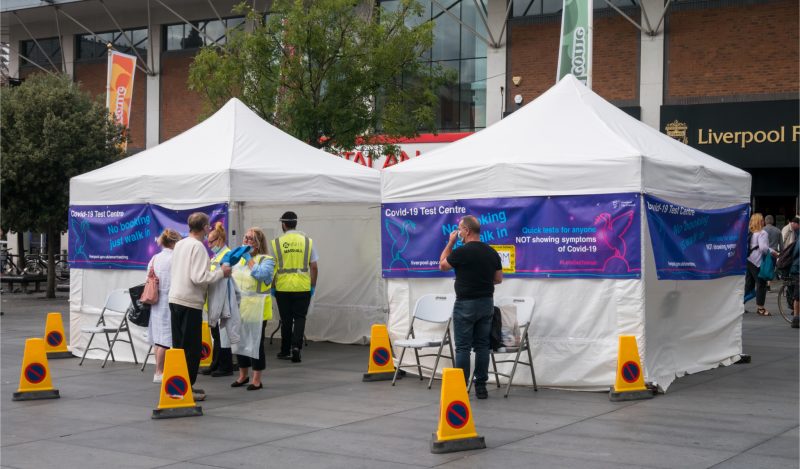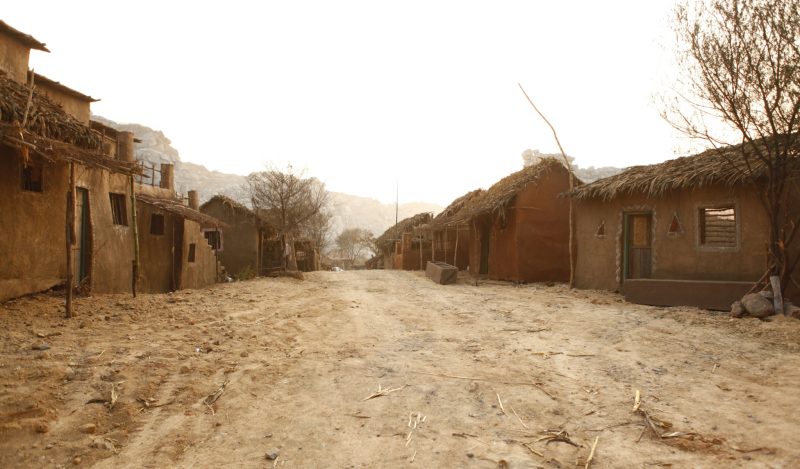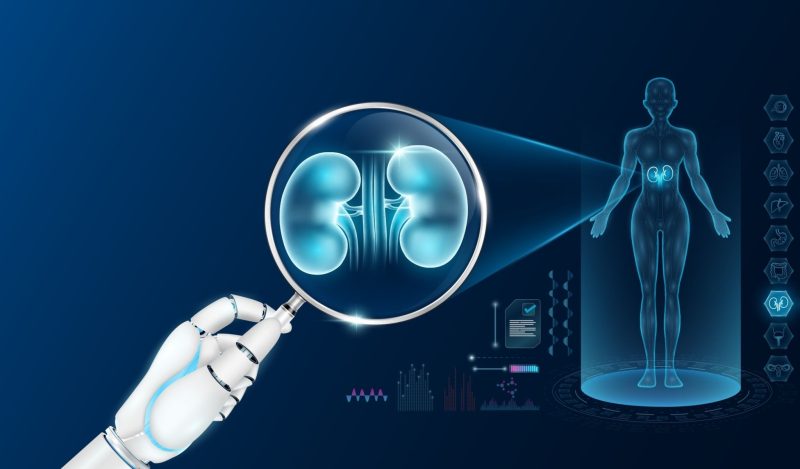Before the Battle of Bunker Hill, my ancestors Benjamin and William Brown stood beside their countrymen, looked at their limited supplies of ammunition, and received instructions to not fire “until you see the whites of their eyes.” Firing more bullets is better in a world of infinite supplies, but the constraint of finite ammunition motivates withholding fire for maximum effect.
Previously, the Biden administration provided hundreds of millions of tests for the United States and required providers and health plans to reimburse Americans for at-home COVID tests. Standing together, we looked at our pile of ammunition and felt a sense of infinitude but, in our country of 340 million people these 500 million tests gave less than two tests for each American.
Today, as Congress weighs whether to continue allocating billions of dollars to tests, some scientists call for more tests.
Tests, however, aren’t silver bullets. They are valuable ammunition in the battle against COVID, but they are costly. In a world where costs matter, it’s important to maximize the benefits relative to costs. To do so with tests, we should consider the lessons of great generals past on how to maximize the effect of limited ammunition and ask whether we’re using our current ammunition in the most effective ways before raising taxes or national debt to buy more ammo that goes to waste..
As we welcome the diagnostic ammunition in our battle against COVID, we need to educate ourselves on how to be better marksmen with these COVID tests. PCR tests tell you if you’re infected, and rapid at-home COVID tests tell you if you’re at risk of infecting other people. The value of a test doesn’t come from learning that we’re infected or infectious, but from what we do in response to that information.
To learn the value of a test, imagine you only had only one bullet, just one test for the next year. What would you personally do with this test? What could our generals, our public health officials, do with one test?
If you tested yourself on a random day when you had no symptoms, your one test would probably say “You’re Negative,” and that wouldn’t change your behavior at all. Such a negative test used with a low pretest probability of being positive is like firing a bullet haphazardly into the fog, long before you see the whites of your enemy’s eyes with a low pre-shot probability of hitting anyone.
In a world of infinite tests, we’d of course love to rain down barrages of tests, testing ourselves every day before we go to work, testing your kids before they go to school, and testing your dog before taking it to the park. Heck, it could even spark joy to test your cat or cow for curiosity. However, we live in a world of finite resources, including finite tests, and we can’t be wasteful. We must maximize the value of every test.
To maximize the value of a test, we must focus on the behavioral changes that can result from a test and maximize the likelihood a test changes our behavior for the better. While some argue that tests can be used to understand the prevalence of disease, there are other, cheaper tools to do this, such as just counting the number of patients visiting doctors with COVID-like illnesses. Some also argue that we need genomic surveillance, but I’m not convinced this can’t be done cost-effectively by randomly sequencing 10 US samples a month instead of the millions we’ve sequenced to date.
As a statistician, my recommendation for genome surveillance to understand SARS-CoV-2 is to focus less on data quantity and more on data quality, on fewer yet more-representative samples. It’s also not clear how whole-genome sequences change public behaviors – knowing the full genomes of novel variants has not helped us predict outbreak duration or cumulative burden, but careful forecasting of case growth rates and cumulative mortality has.
There are, however, some indisputable places where tests can change behavior and make an indisputable difference in public health, and they come from focusing on the two major behavioral changes we can do in response to a positive test. If a patient tests positive, that patient can take care to reduce downstream transmission by using high-quality masks, refraining from close contacts with others and more. Additionally, if a patient tests positive, they can receive early treatments to reduce their risk of severe disease.
By identifying how we’d change our behaviors before we fire our tests, we can know when to fire. If you use your one test before meeting a young and healthy friend at the park, your test might stop you from infecting a young friend, but that friend has a low probability of infection anyway because you’re outside, and they’re less likely to be harmed by COVID because they’re young.
Far preferable would be to get tested before going to Karaoke night in a densely packed nursing home – such a test would be able to stop an event with a high probability of transmission in a population of people with a higher risk of being harmed by COVID. Tests that change our behavior to reduce transmission have more value when used prior to more risky transmission events, and focusing our protection in this way can increase the cost-effectiveness of our tests to save lives.
The availability of treatments increases the value of a test. Thanks to innovative biotechnology companies, oral antivirals have been developed in record time and are effective at reducing the risk of hospitalization from COVID. However, these antivirals target viral reproduction, and viral reproduction slows down over the course of infection. Consequently, these antivirals are likely more effective the earlier they’re administered in the course of infection. Most Americans seek care about 4 days after the onset of symptoms for the flu – if we delay seeking care, we delay our tests, delay our treatments, and reduce the value of our tests.
Because most Americans can’t test themselves every asymptomatic day and identify an infection before the onset of symptoms, it would make the most sense to save a test until you are feeling symptoms. As soldiers on Bunker Hill waited until they saw the whites of the Redcoats’ eyes, there’s value in waiting until you feel the scratch in your throat, the congestion in your nose, and especially an inability to smell grandma’s cookies.
If you’re planning on firing your test at the onset of symptoms, it’s also prudent to (1) get a primary care provider and (2) check with your primary care provider beforehand to see if they’d be able to prescribe an antiviral following an honest account of a positive test. Ensuring medications are available contingent upon a positive test ensures that your test activates treatment options as soon as possible, allowing treatments to have their greatest effect early in the course of infection.
Testing positive immediately after symptom onset and getting antivirals that day would be a good use of a test. Don’t fire until you see the whites of their eyes kept things simple for my great-great-great-great grandfather Benjamin Brown; to keep things simple for Americans, I propose: don’t test until the second you feel sick, or until the hours before you visit a nursing home or have close contact with someone at high risk of severe COVID.
The strategy of allocating bullets differs depending on if you’re a soldier waiting on a hill or a general deciding where piles of ammunition ought to go for the greatest tactical advantage. We’ve covered how Americans – the foot soldiers in our battle against COVID – can use tests for maximum effect. Now, let’s talk to the generals, the federal, state, and local public health officials aiming to assist the population at large.
While I am a mathematician, I can’t pretend to have any optimal solution for allocating tests in the population at large – heck, after years of trying I still haven’t figured out the optimal way to drive to the grocery store (I think about this every time I drive). However, we can’t let the perfect be the enemy of the good, and so absent an optimal solution we can see the value of heuristics.
Whether one is managing federal, state, local, or household outbreaks, preferentially allocating tests to the most valuable settings with the greatest risk-reduction triggered by behavioral changes in tests can lead to greater reductions in mortality and morbidity from COVID than simply sending every person a test or two in the mail.
Giving everyone an equal number of tests may seem fair, but equality of testing opportunity can lead to inequality in health outcomes. If we care about equitable health outcomes, it’s wise to provision tests in proportion to the amount of risk reduced by a test.
Testing asymptomatic kids before school, for example, can waste limited tests. You’re free to do this with your kid and your school, if you have the money and if your acquisition of tests isn’t depriving others of using tests in more valuable settings, but many cash-strapped public schools can’t afford that, and the transmission chains being prevented are in pools of low-risk kids.
Where I went to high school, we didn’t even have enough money for soccer jerseys. To raise money, we had to sweep the bleachers after college football games – should we be required to sweep bleachers to test ourselves every day? Such test-to-stay policies are not practical for poor public schools funded by property taxes in struggling neighborhoods like the ones I grew up in, and so test-to-stay in school is not the hill I’m going to die on.
On the other hand, sending rapid tests to nursing homes would be a very good utilization of tests. Nursing homes accounted for over 30% of COVID deaths by June 2021. Tests in nursing homes have extra value because they can trigger both behavioral changes we’d hope for from a test: you can stop transmission events in high-risk pools through test-to-enter rules, and during an outbreak in a nursing home tests can expedite treatment of residents with a high risk of severe outcomes from COVID.
By popular demand, the Biden administration opened the vaults and provided ammunition to our country, and the success of their policy depends on what we do with these tests. As we consider how much epidemiological ammunition we need every year, we need to ensure we’re not being wasteful with the ammo we’ve been given. If we waste our tests, it will be for nothing, whereas if we work together and use our tests wisely we can save lives and may be able to obviate more costly interventions.
Yet, even 500 million tests was not a lot of tests per-capita per-outbreak in our country of 340 million capita facing Omicron outbreaks and, now, a BA.2 outbreak. Because tests cost resources, it’s prudent that we avoid being wasteful with the tests we have by becoming better marksmen and holding our fire until our tests can have the greatest impact.
As consumers, we can educate ourselves and our neighbors about the tests we buy and how to use them for maximum effect. As citizens and soldiers in the battle against COVID, we can also kindly support public health professionals by appreciating their tactical considerations should they preferentially allocate tests to high-risk settings for maximum advantage.
The value of a test comes not from surveillance, for which we have substitutes and can do far cheaper with better sampling designs, but from a test’s potential to reduce transmission and expedite treatment for disease. If we use our tests wisely, they can help us all participate in our public health, keeping our communities healthy and hospital doors open, and defending our hospitals and our neighbors like Revolutionary soldiers in the Battle of Bunker Hill.
Published under a Creative Commons Attribution 4.0 International License
For reprints, please set the canonical link back to the original Brownstone Institute Article and Author.









